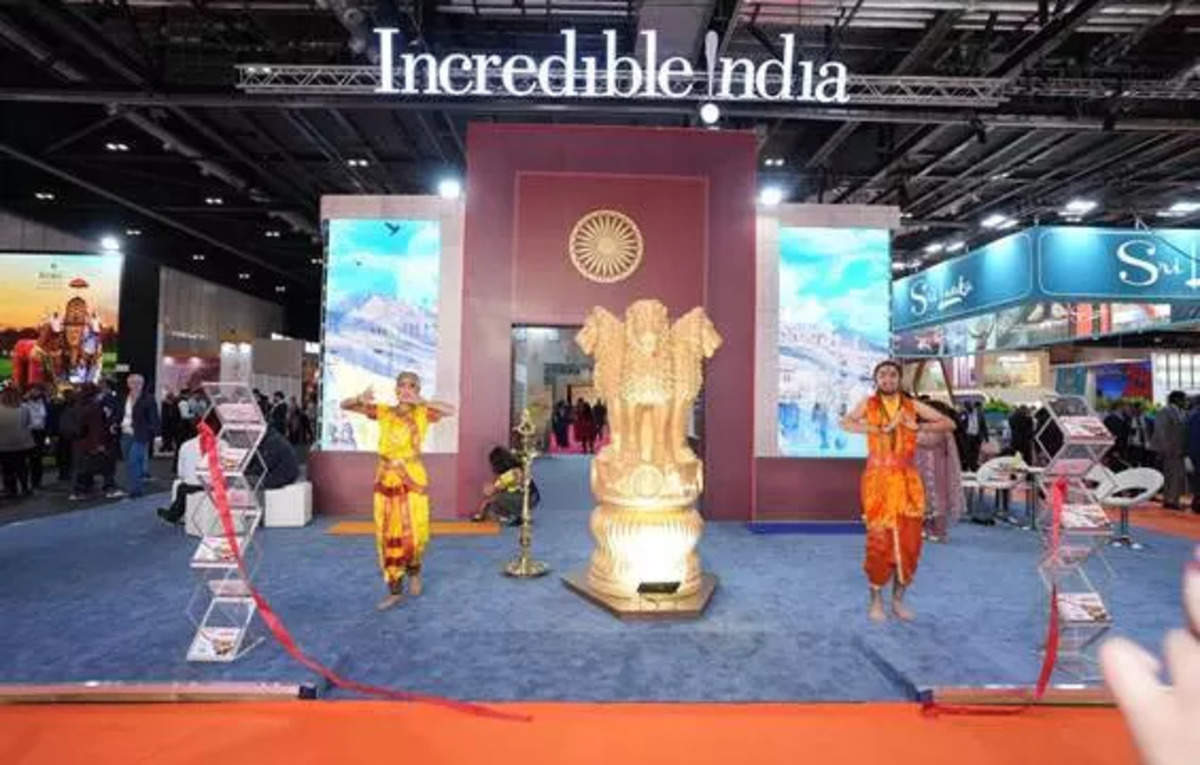
In a recent briefing by Manisha Saxena, Director General of Tourism, Govt of India, attention was drawn to a notable decrease in the budget allocation for overseas tourism promotion, which had sparked concerns within the industry recently. Saxena, however, clarified that while there appears to be a reduction in this specific budgetary segment, the overall financial commitment to tourism promotions has, in fact, increased.
“This reallocation is part of a strategic initiative by the ministry aimed at streamlining our promotional efforts in response to the evolving digital landscape. Our objective is to bridge the gap between domestic and overseas promotion activities effectively. We intend to conduct highly targeted promotional campaigns in both traditional and emerging markets. This approach will enable us to better understand market trends and preferences, ensuring that our promotional efforts resonate with our target audiences,” she explained.
Recently, during the interim budget announcement, the Indian Finance minister highlighted the government’s aim to enhance domestic travel while cultivating new tourist spots within India, improving connectivity and infrastructure enhancements in places like Lakshadweep. However, contrasting this, a mere sum of INR 3 crore was allocated for the promotion of India overseas through its ‘Incredible India’ campaign.
Speaking further, Saxena attributed part of the budget reduction in overseas promotion to the consolidation of overseas offices, emphasising a more streamlined and efficient engagement with diplomatic missions worldwide. This decision, she said, is aligned with the ministry’s broader strategy of maximising outreach through diplomatic missions. Notably, the ministry of tourism last year, had to shut its overseas offices bringing the number down from 20 to 8.
A few industry stakeholders dealing in the inbound tourism business, have noted that this drastic 97 per cent reduction from last year’s INR 100 crore allocation has marginalised the acclaimed Incredible India campaign, especially its overseas promotion and market development efforts. Taking a look at the figures on the other hand, the Ministry of Tourism has increased the FY25 budget estimate to INR 2,080.03 crore, up by 22 per cent from last year’s actual expenditure of INR 1,692 crore. The bulk of this, INR 1,750 crore, is designated for the Swadesh Darshan scheme, aiding state governments in tourism infrastructure development since 2014-15, as per a source. “Over the past five to ten years, significant strides have been made in infrastructure development, as part of initiatives like the Swadesh Darshan scheme. Concurrently, efforts have enhanced spiritual tourism and capacity building for tourism providers under the Prashad Scheme. These initiatives have resulted in the creation of new tourism products, such as adventure and rural tourism experiences. Dhordo’s recognition as the Best Tourism Village by the UNWTO has been a highlight, prompting the initiation of a similar competition by the Ministry of Tourism. Last year, 35 villages were identified as exemplary tourism destinations, with the competition now in its second season, drawing numerous entries,” she added.
150 proposals received for destination development under challenge mode:
Amidst these discussions, Saxena also shared the updates on the domestic tourism front, revealing a surge in proposals from state governments for the development of destinations under challenge mode which was initiated under last year’s budget announcement.“We have received an overwhelming response, with nearly 150 proposals submitted by the states,” she disclosed. “Out of these, we are set to identify and develop 50 destinations, ensuring a comprehensive enhancement across all touchpoints of the tourist experience.”
Adding to that, Saxena underscored the pivotal role of hosting G20 meetings across 60 locations, venues which have helped spotlighting lesser-known facets of the country. “The extensive coverage of G20 events across 60 venues has significantly bolstered India’s global presence,” she affirmed. “Not only have we witnessed the emergence of state-of-the-art conferencing facilities, but also substantial capacity building efforts and the creation of unique tourism experiences, along with more convention centres and accommodation facilities lined up for launch.”
“This progress positions these locales for substantial growth in the tourism sector, especially in MICE. Initiatives such as establishing city-level bureaus for MICE tourism and promoting India as a premier wedding destination further underscore the commitment to expanding tourism opportunities and driving economic growth,” she stated reflecting on PM Modi’s aspiration to position India as a premier wedding destination on the global stage.
Parellely, the Ministry of Tourism, Government of India, in collaboration with key stakeholders including Convention Centers, hotel chains, IRCTC, and the India Convention Promotion Bureau, recently participated in the Asia Pacific Incentives and Meetings Event (AIME) held in Melbourne, Australia. The aim was to bolster efforts to position India as a leading MICE destination in the Asia Pacific region.
Last mile connectivity, engagement with locals matter:
Beyond infrastructure, the ministry is also focusing on capacity building and promoting experiential tourism which involves active engagement of locals, she added. “For us in government and industry, it’s not just about promoting destinations. I always stress the importance of last mile connectivity. This means more than just having digital or transportation links—it’s about building up the skills and knowledge of the local workforce,” she said.
“Tourism isn’t just about popular spots anymore. Therefore, engaging local communities in delivering authentic and lesser known experiences not only enhances economic opportunities but also preserves intangible heritage. By fostering collaboration and innovation, we’re creating a tourism landscape that is inclusive, sustainable, and rich in diverse experiences,” she added.
Saxena, while addressing the tourism and hospitality industry stakeholders at the recently held PATA Tourism Powerhouse programme, also called for unity in addressing the challenges confronting the tourism sector, emphasising the imperative of collective action in realising India’s tourism potential. “By aligning our efforts and leveraging our collective strengths, both the industry and government can propel India’s tourism industry to greater heights. We have just touched the tip of the iceberg,” she concluded.



